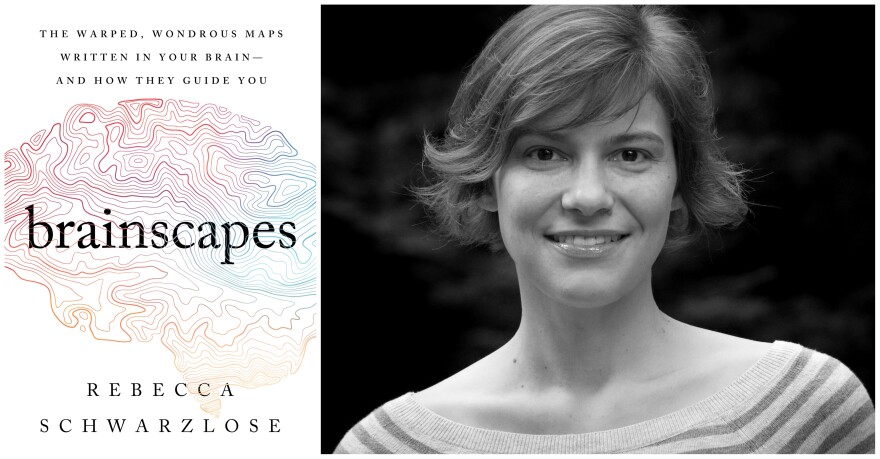Your brain contains maps. This is not nearly the same thing as saying your brain can be mapped — although scientists continue to work on just that. No, your brain actually has maps, spatial representations that help it make sense of your body and your surroundings.
If you stub your toe, your brain knows from its touch map what area has been hurt. If you instead bump your knee, a different part of the touch map lights up with pain. Various maps in different parts of the brain help us process not just what we touch (and where), but what we see, what we hear, even what we taste and smell.
“The brain, even though it looks like one big solid organ, is comprised of many different areas that specialize in doing different things,” neuroscientist Rebecca Schwarzlose explained on Tuesday’s St. Louis on the Air. “And so if you zoom in on one of these areas, and you study how it's organized, you find that there's actually in many of these regions a literal map, a representation of the things that you feel, the spaces around you, the ways that you can move your body that are laid out across the surfaces and within the tissues of your brain.”
Schwarzlose’s highly readable new book, “Brainscapes,” goes deep on those maps, illuminating our brains in the process. It was supported by a grant from the Alfred P. Sloan Foundation Program for the Public Understanding of Science and Technology.
The book explores how the brain’s maps are made, with neurons etching them in real time as they fire (map ingredients, Schwarzlose writes, are “cells, electricity and time”). But it also explores how scientists first discovered key maps in both human and animal brains, and how working with patients after things went awry (say, people with epilepsy, or soldiers who’d lost their sight after their skulls were pierced by bullets) led to big breakthroughs in our understanding of brain behavior.
“What's kind of mind-bending about these maps is that we really ascribe our ability to see to our eyes and our ability to feel to our skin,” Schwarzlose explained. “But at the end of the day, what determines what we perceive is what's happening in these maps inside of our brain. And you can see that because, if you either damage these maps or you stimulate these maps, you can either take away a sensation that a person should be feeling — or you can create a sensation that they shouldn't be feeling, because they're not being touched.”
A postdoctoral research fellow at the Washington University School of Medicine, Schwarzlose understands brain breakthroughs firsthand. While earning her PhD in neuroscience at MIT, she — along with colleagues — discovered and named a part of the brain. The fusiform body area helps us visually process human bodies (a separate area from the part that processes their faces).
“As neuroscience keeps working forward, we keep discovering these new little tiny slivers of brain that do these wonderful, magnificent things,” she said. “And so it really is a pioneering endeavor. It's really exciting. And the truth is that we keep discovering brain areas every day in the field.”
Those advances are now being put to good use. Scientists are helping people in vegetative states communicate, for example, just by thinking while hooked up to machines keyed into their brain maps.
“Once you know how perception, imagination, action, how those things are processed in the brain, you can peek in, and you can observe it,” Schwarzlose explained.
“St. Louis on the Air” brings you the stories of St. Louis and the people who live, work and create in our region. The show is hosted by Sarah Fenske and produced by Alex Heuer, Emily Woodbury, Evie Hemphill and Lara Hamdan. The audio engineer is Aaron Doerr.






